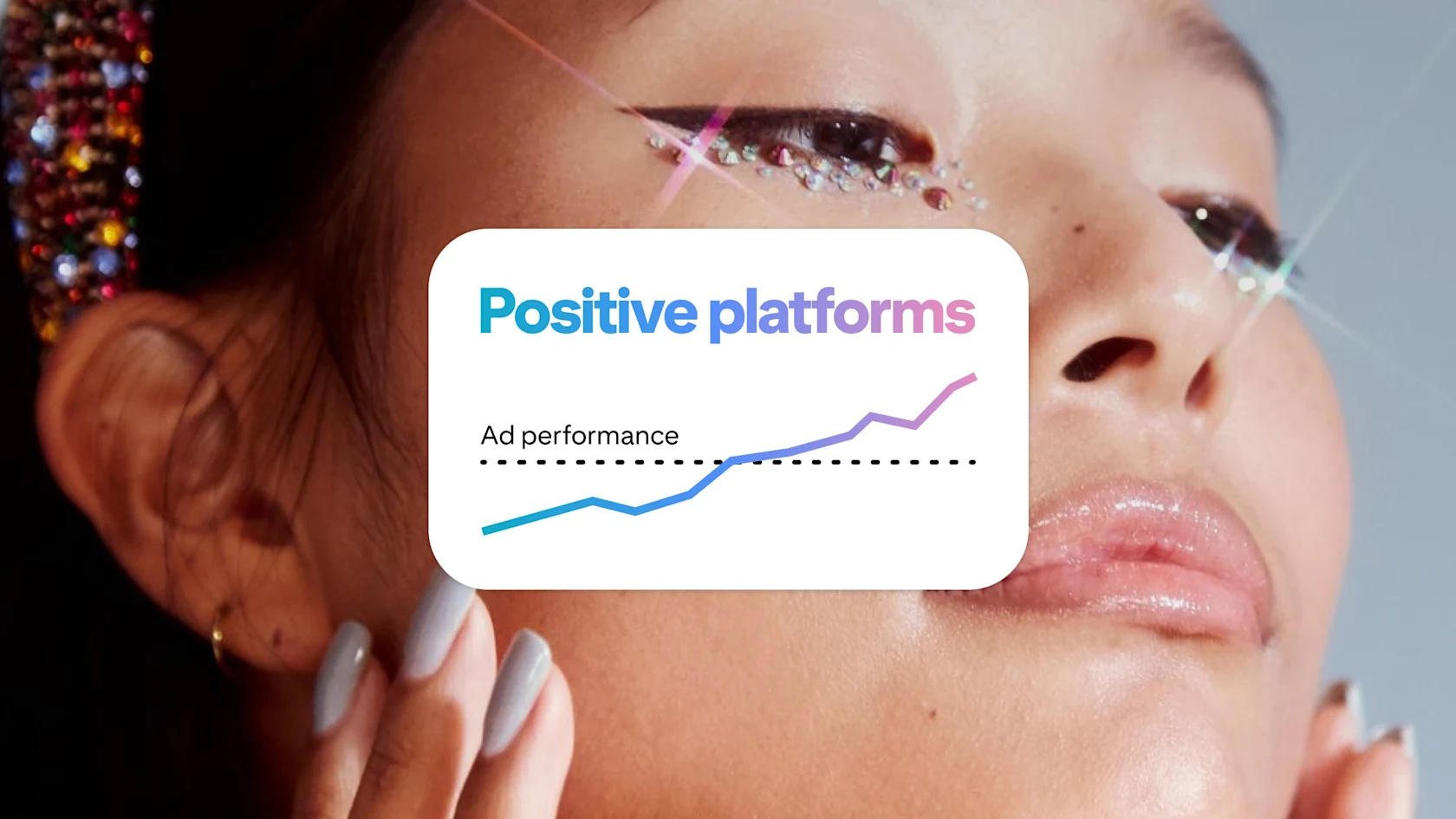More than a feeling: How positive platforms impact performance
27 Mac 2025 — Soniya Monga, VP of Global Agency Sales

In today’s competitive landscape, marketers are constantly searching for any advantage that’ll improve their results. New research reveals there’s one thing that many businesses have been overlooking: positive ad environments.
Brand safety tools are often a lifeline for marketers, but they only help combat harmful, unlawful or illegal content when it comes to ad adjacency, or the content directly surrounding an ad. The truth is, people browse a lot of content before and after your ad, so even if you have brand safety tools turned on, they can still encounter something they wish they hadn’t seen. This means your brand may be protected from negative content—but your customer isn’t.
Previous studies have shown that the way people feel on inspiring, positive platforms like Pinterest can affect their emotional health. But now, new findings from media intelligence firm MAGNA indicate that ads in overall environments people perceive as positive can also drive better results.1
In other words, positivity isn’t just nice to have. The way your customers feel on certain platforms can impact your bottom line, and positive platforms can actually become your competitive advantage.
Studying the parts of positivity
We recently commissioned MAGNA to help us understand how attributes of an ad environment—including positivity—can impact a brand’s KPIs. For their study, MAGNA collected real-world ad data across various social media platforms. Along the way, they asked people to rate their perceptions of the platform across five attributes, including how positive they perceived the platform to be.
MAGNA supplemented that with in-lab testing, using biometric sensors and eye tracking technology to assess people’s emotional responses when seeing different content. They also ran marketing mix modeling (MMM) simulations to fully study the impact of positively perceived ad environments and identify specific ways positivity contributed to a brand’s success.
The top takeaways
The research is clear: When people experience a positive environment, marketers can see better results, from increasing audience engagement to boosting sales. Here are the top four findings marketers should know:
People are more engaged when they’re on a platform they perceive as positive
The study found that people were 20% more emotionally engaged with content they saw on a platform they viewed as positive.2 They were more leaned in as well, spending an average of 15% more time looking at the ads.3Ads on positively viewed platforms work harder
When the same exact ad was shown on different platforms, people responded that an ad seen in an environment they viewed as positive was twice as trustworthy, twice as interesting and 1.5x more likeable.4 Put another way: Your customer’s experiences are crucial, and can make the same piece of creative work harder.People are more likely to take action when they see ads on platforms they perceive as positive
Positively viewed platforms don’t just help brands improve perception, they also make people more likely to act. Compared to non-positive spaces, platforms perceived as positive can be up to 94% more impactful in driving purchase intent.5Brands see better results when they account for viewability and positivity in their media buying strategy
In the MMM simulations, the same creative and same finite budget generated up to 24% more sales when brands incorporated viewability and positivity in their media buying strategy.6
more time looking at ads3
more likeable4
more impactful in driving purchase intent5
more trustworthy4
Make positivity part of your plan
Above all, this study shows the power of planning with positivity in mind. It can help boost performance and brings more impact than what some brand safety tools can do on their own. Here’s how to act on the insights:
Enable the right things in your brand safety toolkit
Not all impressions are equal. Viewability and brand safety should be considered more than guardrail metrics, so make sure you’ve enabled verification tools like Integral Ad Science and DoubleVerify. Continue to actively monitor these metrics, and analyze the quality of your ad environments
Use brand lift studies as a way to know how your audience feels
Although brand safety tools are important, go beyond content adjacency and consider audience sentiment. In your brand lift surveys, add a question to understand how positive your audience feels on the platforms you use. Look at these responses in relation to additional info—like targeting, creative or audience data—to identify exactly how your ads are resonating on that platform. Use these insights to inform future campaigns and optimizations you can make over time to help drive lower funnel results.
Find ways to measure the impact of positive platforms
As you build a measurement system of truth, work with your MMM vendors to make sure you’re considering positivity and viewability. Don’t be afraid to ask discovery questions about which metrics to examine with your model’s inputs and outputs.
Remember that this process requires some fine-tuning. First, explore ways to integrate viewability and positivity. Doing so will help you better understand and improve accuracy of your MMM results—and you can use proxy metrics for positivity in the short term to contextualize your results. As you refine your system, work towards a model that includes positivity and viewability from the onset, and don’t be afraid to re-engage with platforms to drive scale and integration.
Finally, remember to put your ads on platforms that prioritize positivity. At Pinterest, we take positivity very seriously. It guides our product investments, social impact spending and our own accountability metrics. Pinterest is ranked the #1 social media platform for instilling feelings of self-worth and purpose, as measured by a global wellbeing metric.7
Share the results of MAGNA’s study with your team and think about ways you can use Pinterest to enhance your performance and get the competitive advantage you’ve been looking for.

